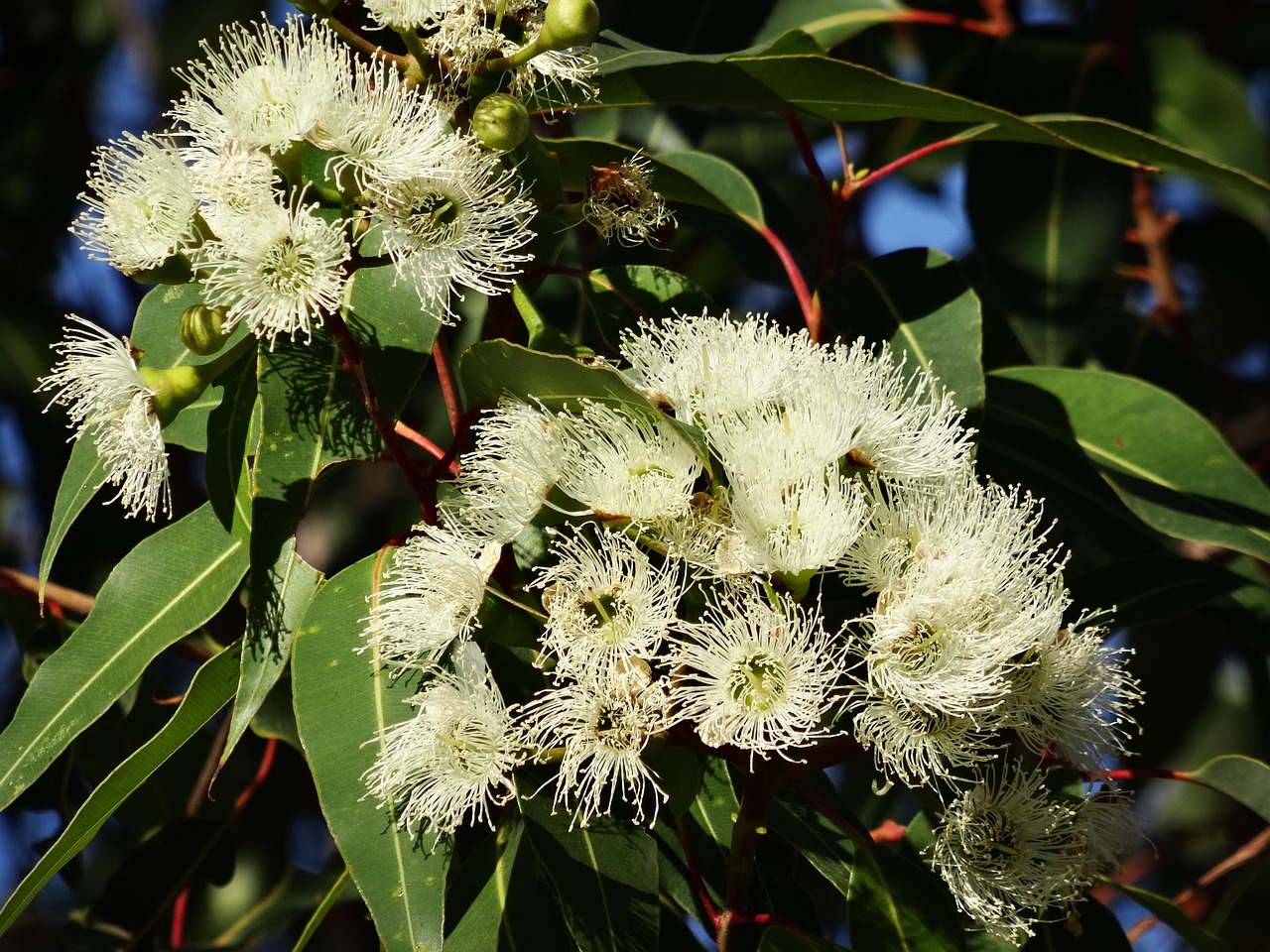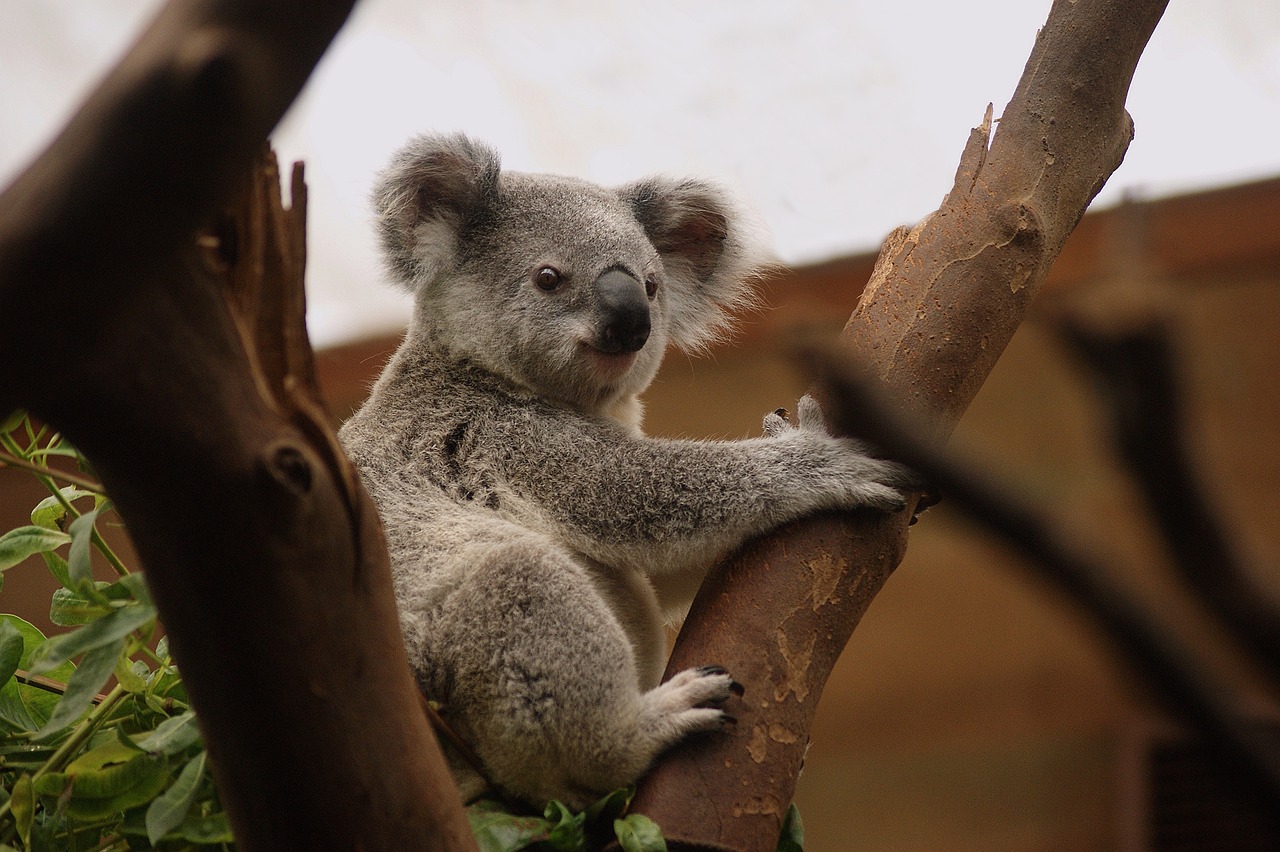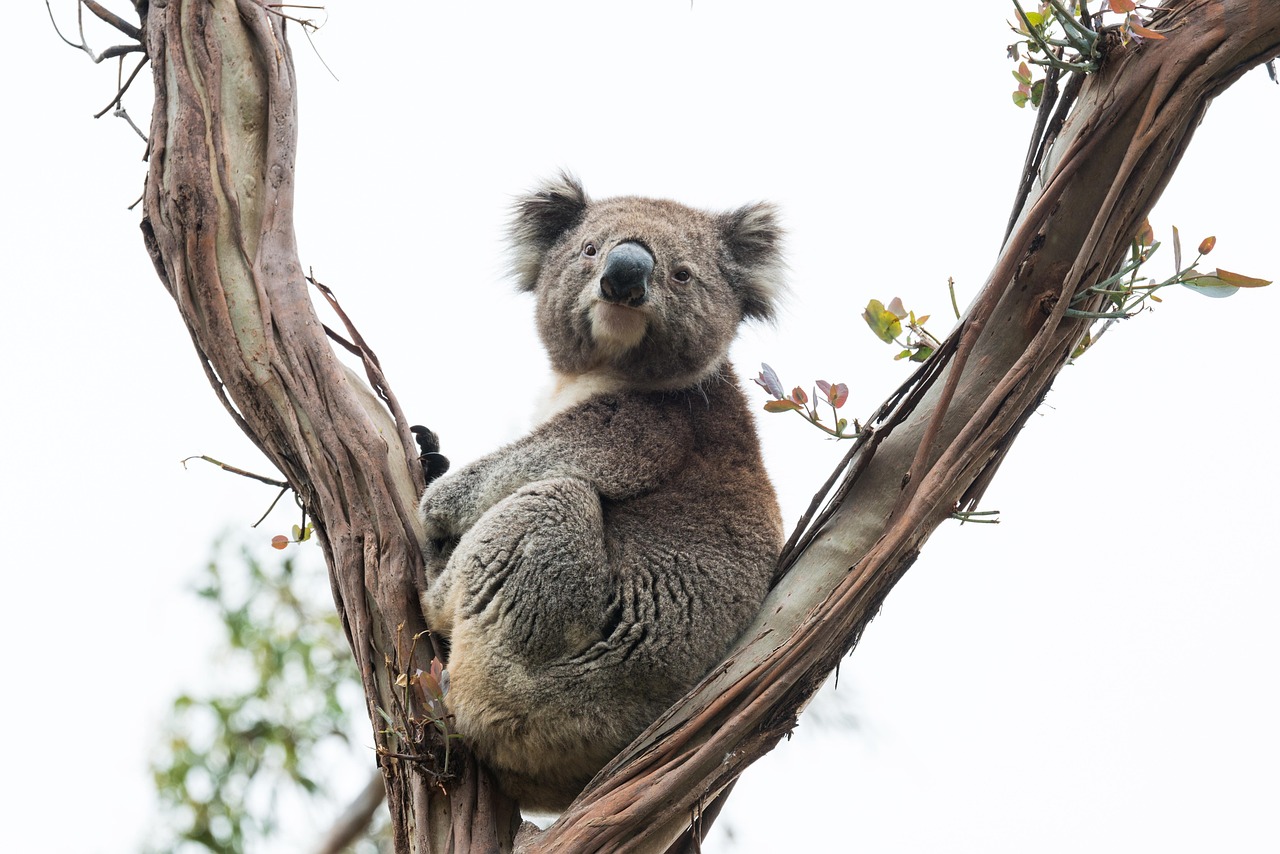Pruning eucalyptus trees in parks involves techniques that promote healthy growth and maintain safety. Essential methods include thinning, crown reduction, and removing dead or diseased branches. Proper timing and tools are crucial for effective pruning.
Understanding Eucalyptus Trees
Eucalyptus trees are known for their rapid growth and adaptability to various climates. They are native to Australia but have been widely planted in parks and gardens around the world. These trees can grow tall, reaching heights of up to 200 feet, making them a striking presence in any landscape. Additionally, they are valued for their aromatic leaves and ability to thrive in diverse soil types.

In urban settings, eucalyptus trees offer shade and contribute to air quality improvement. However, their growth habits can sometimes lead to challenges, especially when it comes to maintenance. Regular pruning is essential to ensure the safety of park visitors and the health of the trees themselves.
The Importance of Pruning
Pruning eucalyptus trees serves multiple purposes. It helps maintain the tree’s structural integrity while promoting healthy growth. The following are some key reasons why pruning is essential:
- Safety: Pruning removes dead or weak branches that may pose risks to park visitors.
- Health: Removing diseased wood prevents the spread of pathogens and pests.
- Aesthetics: Regular trimming helps maintain a visually appealing shape and size.
- Growth Control: Pruning can help manage the tree’s height and spread, preventing overcrowding.
Types of Pruning Techniques
Several pruning techniques can be applied to eucalyptus trees. Each technique serves a specific purpose and should be chosen based on the tree’s condition and location.

Thinning
Thinning involves selectively removing branches to improve air circulation and light penetration within the canopy. This technique promotes healthier foliage and reduces the risk of disease. Thinning also helps manage the tree’s weight distribution, making it less susceptible to wind damage.
Crown Reduction
Crown reduction is a more drastic approach that involves shortening the height of the tree’s crown. This technique is often used when the tree poses a risk of interfering with power lines or structures. Care must be taken to leave enough foliage to ensure the tree stays healthy after pruning.
Deadwood Removal
Deadwood removal is the practice of cutting away branches that are no longer alive. This technique not only improves the tree’s appearance but also reduces the risk of falling branches. Regular inspection is necessary to identify and remove deadwood effectively.

Best Practices for Pruning Eucalyptus Trees
To achieve optimal results when pruning eucalyptus trees, consider the following best practices:
- Timing: The best time to prune eucalyptus trees is during their dormant season, typically late winter or early spring. This timing minimizes stress on the tree.
- Tools: Use sharp, clean tools such as pruning shears or saws. This helps make clean cuts and reduces the risk of infection.
- Avoid Topping: Never top a eucalyptus tree as this can lead to weak growth and increased susceptibility to pests.
- Observe Growth Patterns: Before pruning, observe how the tree grows naturally. Aim to maintain its natural shape when making cuts.
Potential Risks of Improper Pruning
Improper pruning can lead to several issues that may negatively impact eucalyptus trees. Some potential risks include:
- Pest Infestation: Poor pruning practices can create wounds that attract pests.
- Disease Spread: Inadequate sanitation can lead to diseases spreading among trees.
- Structural Weakness: Incorrect cuts can weaken the tree’s structure, increasing the likelihood of branch failure.
Caring for eucalyptus trees through proper pruning techniques not only enhances their beauty but also ensures their longevity and safety in public spaces. Understanding these practices is essential for park maintenance teams and arborists alike.

Next Steps in Eucalyptus Tree Care
After understanding the importance and techniques of pruning, it’s vital to implement a regular maintenance schedule for eucalyptus trees in parks. This includes monitoring tree health throughout the year and preparing for seasonal pruning needs.
Tools and Equipment for Pruning Eucalyptus Trees
Having the right tools is essential for effective pruning. The proper equipment not only makes the job easier but also ensures clean cuts that promote healthy healing. Here are some common tools used for pruning eucalyptus trees:
- Hand Pruners: Ideal for smaller branches, hand pruners are perfect for making precise cuts.
- Loppers: These are used for branches that are too thick for hand pruners, allowing for better leverage and cutting power.
- Saws: A pruning saw or chainsaw may be necessary for larger limbs. Ensure the saw is sharp for efficient cutting.
- Safety Gear: Protective gloves, goggles, and a hard hat are crucial to protect against falling branches and debris.
Maintenance of Pruning Tools
Keeping pruning tools in good condition is vital for their performance and longevity. Here are some maintenance tips:
- Cleaning: After each use, clean the tools to remove sap and dirt. This helps prevent the spread of diseases.
- Sharpening: Regularly sharpen blades to ensure clean cuts. Dull blades can crush branches and lead to damage.
- Storage: Store tools in a dry place to prevent rust. Consider using a protective case for added safety.
Timing: When to Prune Eucalyptus Trees
The timing of pruning eucalyptus trees can significantly affect their health and growth. Understanding when to prune is essential for maximizing the benefits of the practice.
Seasonal Considerations
Different seasons offer unique advantages for pruning eucalyptus trees:
- Late Winter to Early Spring: This is the ideal time for major pruning. The trees are dormant, reducing stress and encouraging vigorous growth as they emerge from dormancy.
- Summer Pruning: Light pruning can be done in summer to remove dead or diseased branches. This can help improve air circulation in the canopy.
- Avoid Fall Pruning: Pruning in fall can expose trees to stress before winter, making them vulnerable to disease and cold damage.
Understanding Eucalyptus Growth Patterns
To effectively prune eucalyptus trees, it’s important to understand their growth patterns. Eucalyptus species can exhibit different growth habits depending on their environment and age.
Growth Habit
Eucalyptus trees may grow in various forms, including:
- Tall and Straight: Many eucalyptus species develop a tall trunk with a narrow crown, making them ideal for shade trees.
- Bushy Growth: Some varieties have bushy growth patterns, which may require more frequent pruning to maintain shape.
- Fast Growth Rate: Eucalyptus trees are known for their rapid growth, necessitating regular monitoring and maintenance.
Response to Pruning
Eucalyptus trees typically respond well to pruning. However, understanding how they react is crucial:
- Coppicing: Many eucalyptus varieties can regrow vigorously from stumps or cut branches, a technique known as coppicing.
- Suckering: Some trees may produce suckers or shoots from the base after heavy pruning. These can be removed to maintain focus on the main trunk.
- Regrowth Patterns: Observe how the tree regrows after pruning. Adjust future pruning techniques based on these observations.
Environmental Factors Affecting Pruning
The environment plays a significant role in how well eucalyptus trees respond to pruning. Factors such as soil type, moisture levels, and local climate can influence both tree health and pruning outcomes.
Soil Quality
Eucalyptus trees thrive in well-drained soils rich in organic matter. Poor soil conditions can stress the tree, making it more susceptible to damage during pruning.
Water Availability
Adequate watering before and after pruning is critical. Water stress can hinder recovery and growth. Consider the following:
- Drought Conditions: If the area is experiencing drought, avoid heavy pruning until conditions improve.
- Irrigation: Ensure that trees receive sufficient water after pruning to support new growth.
Climate Influence
The local climate also impacts how eucalyptus trees should be pruned:
- Temperature Extremes: In areas with extreme temperatures, timing of pruning should be carefully considered to avoid stress.
- Wind Exposure: Trees in windy areas may require more frequent pruning to maintain structural integrity.
Understanding these environmental factors ensures that pruning practices are adapted to support the health of eucalyptus trees in park settings.
Common Eucalyptus Tree Diseases and Pests
Maintaining the health of eucalyptus trees in parks involves being vigilant about possible diseases and pests. These issues can affect the trees’ vitality and, consequently, their aesthetic and structural value. Understanding common threats is crucial for effective management.
Diseases Affecting Eucalyptus Trees
Several diseases can weaken eucalyptus trees, leading to poor growth or even tree death. Some of the most common diseases include:
- Eucalyptus Canker: This fungal disease results in lesions on the bark and can lead to branch dieback. It is often exacerbated by environmental stress.
- Phytophthora Root Rot: Caused by a soil-borne pathogen, this disease affects the roots, leading to wilting and yellowing of leaves. It thrives in poorly drained soils.
- Leaf Blight: This condition is characterized by browning and dropping of leaves. It is typically caused by fungal pathogens and can spread rapidly in humid conditions.
Identifying Disease Symptoms
Early detection of diseases is critical for effective management. Look for these symptoms:
- Yellowing Leaves: This may indicate poor nutrition or root issues.
- Bark Lesions: Cracks or lesions on the bark can signal canker disease.
- Wilting: Wilting leaves or branches may indicate root rot or severe water stress.
Pests That Target Eucalyptus Trees
Pests can pose significant threats to eucalyptus trees, leading to stress and potential decline. Some common pests include:
- Eucalyptus Longhorned Borer: This beetle larvae tunnel into the wood, causing structural damage. Infestations may lead to tree decline.
- Leaf Beetles: These pests feed on leaves, leading to defoliation and weakened trees.
- Aphids: Small sap-sucking insects that can weaken trees and promote sooty mold growth on leaves.
Monitoring for Pests
Regular monitoring is essential for early detection of pest infestations. Signs include:
- Visible Insects: Look for clusters of insects on leaves or stems.
- Leaf Damage: Check for holes or discoloration indicating feeding activity.
- Sooty Mold: A black coating on leaves may indicate aphid infestations.
Integrated Pest Management (IPM) Strategies
Implementing an Integrated Pest Management approach helps control pests effectively while minimizing harm to the environment. Consider the following strategies:
Cultural Practices
Cultural practices can enhance tree health and resilience against pests and diseases:
- Proper Spacing: Ensure adequate spacing between trees to improve air circulation and reduce humidity, which can limit disease spread.
- Soil Health: Maintain healthy soil through organic amendments to promote strong root systems.
- Irrigation Management: Water trees appropriately to avoid water stress, which can make them more susceptible to pests and diseases.
Biological Control Methods
Introducing natural predators can help manage pest populations:
- Nematodes: Beneficial nematodes can target soil-dwelling pests.
- Ladybugs: These insects feed on aphids and can help control their populations naturally.
Chemical Controls
If pest populations exceed acceptable levels, chemical controls may be necessary. Always use pesticides responsibly:
- Selective Pesticides: Choose products that target specific pests without harming beneficial insects.
- Follow Guidelines: Adhere to local regulations and guidelines when applying any chemical treatments.
The Role of Pruning in Disease and Pest Management
Regular pruning plays a vital role in preventing the onset of pests and diseases. By maintaining healthy trees and removing infected or weak branches, the risk of infestations and infections can be significantly reduced.
Creating Airflow
Pruning improves airflow within the tree canopy, helping to reduce humidity levels that favor fungal growth. This is particularly important in climates that experience high moisture levels.
Removal of Infected Material
During pruning, removing dead or diseased branches prevents spreading pathogens throughout the tree. Proper disposal of this material is also important to minimize risks.
Best Practices for Tree Health Monitoring
To ensure the ongoing health of eucalyptus trees, implement a routine monitoring schedule. This includes:
Visual Inspections
A regular visual inspection should be performed at least twice a year. Look for any signs of distress, including leaf discoloration or unusual growth patterns.
Soil Testing
Conduct soil tests to determine nutrient levels and pH balance. This information aids in making informed decisions regarding fertilization and soil amendments.
Documentation
Keep detailed records of inspections, pruning activities, and any pest or disease interventions. Documentation helps track changes over time and informs future management decisions.
By staying proactive in monitoring eucalyptus trees for diseases and pests, along with implementing effective management strategies, parks can maintain healthy and beautiful tree populations for public enjoyment.
Integrating Community Involvement in Eucalyptus Tree Care
Engaging the local community in the maintenance of eucalyptus trees can enhance the success of pruning techniques and overall tree health. Community involvement fosters a sense of ownership and responsibility towards urban green spaces.
Volunteer Programs
Establishing volunteer programs allows community members to participate directly in tree care. These programs can include:
- Tree Planting Days: Organizing events for planting new eucalyptus trees alongside maintenance of existing ones.
- Pruning Workshops: Offering training sessions to teach community members proper pruning techniques.
- Monitoring Teams: Forming groups to regularly inspect trees for signs of disease and pest infestations.
Educational Outreach
Education is key to promoting understanding of tree care and its importance. Consider the following outreach strategies:
- School Programs: Collaborating with local schools to introduce children to the importance of trees and conservation.
- Public Seminars: Hosting seminars to educate the community on the benefits of eucalyptus trees and best care practices.
- Informational Signage: Installing signs in parks that explain the benefits of eucalyptus trees and how they are maintained.
Future Trends in Eucalyptus Tree Management
The management of eucalyptus trees continues to evolve with advancements in technology and environmental awareness. Some emerging trends include:
Data-Driven Approaches
Utilizing technology for data collection can enhance tree management. Tools such as:
- Mobile Apps: Applications that allow park managers to track tree health, maintenance schedules, and pest outbreaks.
- Drones: Drones can be used for aerial monitoring of tree canopies, helping identify issues that may not be visible from the ground.
Sustainable Practices
As environmental concerns rise, adopting sustainable practices in tree care becomes increasingly important. This includes:
- Organic Treatments: Emphasizing organic pest control methods to minimize chemical use.
- Water Conservation Techniques: Implementing rainfall harvesting systems and drip irrigation to ensure efficient water use.
- Diversity in Planting: Promoting biodiversity by planting various species alongside eucalyptus to create a more resilient ecosystem.
Final Thoughts
Caring for eucalyptus trees in parks involves a combination of proper pruning techniques, regular monitoring, and community involvement. By understanding the unique needs of these trees and implementing best practices, park managers can ensure their health and longevity.
The integration of technology and sustainable practices further enhances tree management efforts. Engaging the community not only fosters a deeper appreciation for urban forests but also empowers individuals to contribute to their local environment. As we move forward, continued education and adaptive management strategies will be vital in preserving eucalyptus trees as valuable assets in park settings.
Ultimately, the goal is to create vibrant, healthy ecosystems that benefit both people and nature. With careful attention and proactive care, eucalyptus trees can thrive, providing shade, beauty, and environmental benefits for generations to come.
